This post may contain affiliate links. Please read my disclosure policy.
If you’re like me, you care deeply about what goes into your kitchen—not just the food but the cookware too. Over the years, my team and I have tested a range of non-toxic cookware options. Some have lived up to the hype, others not so much.
In this guide, I’m excited to share everything I’ve learned about the safest cookware available today and the best options I’ve personally tried.
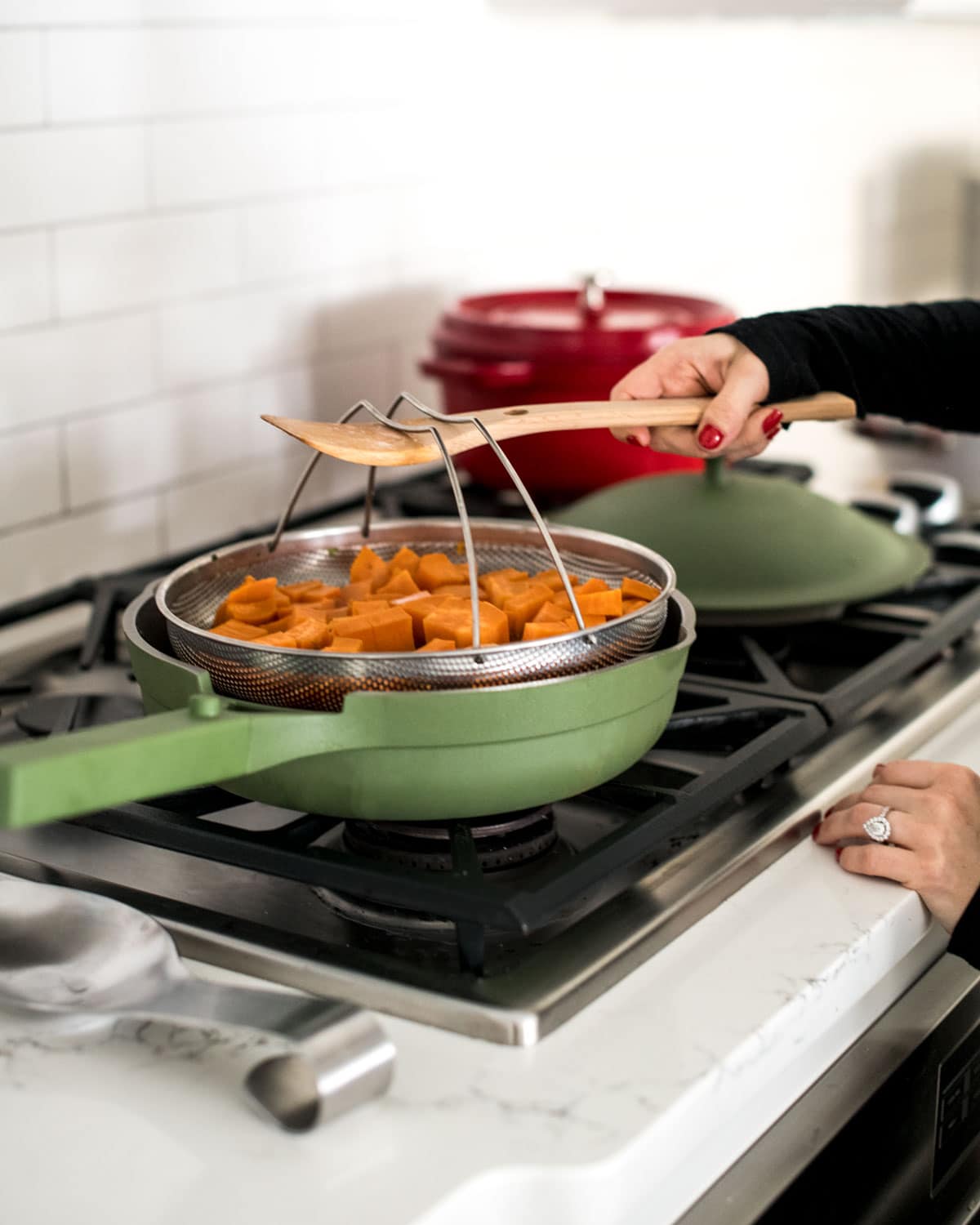
Non Toxic Cookware Guide
If you’re hanging out here with me, I have a feeling that you like to put a lot of thought into what goes into your kitchen. You want to fill your cabinets and refrigerator with food that’s well-rounded, nourishing, and safe for you and your family. You want to fill your table with balanced meals that are delicious and healthy at the same time. And you want to have plenty of yummy options available for when you want to indulge, too.
I totally get it. We want to have it all!
“Having it all” isn’t about eating clean all the time. In fact, I’d argue that this kind of all or nothing mentality will just stress you out and backfire in the end. The way I see it, a clean lifestyle is about looking for opportunities to make safe, balanced choices for yourself and your loved ones whenever possible. This goes beyond food!
Choosing safer cookware is one more way you can pursue a cleaner lifestyle. I’ve started integrating safer options into my own cookware collection and have been really happy with the results. I’m excited to share with you what I’ve learned about the world of cookware and how it might impact our health!
Why Safe Cookware Matters
When you put so much thought into the food you prepare for yourself and your family, it only makes sense to think about what your food is cooking in, right? I’ve learned that many mainstream cookware brands use materials that could be leaching harmful chemicals into your meals. The cookware you choose plays a big role in keeping your meals safe and nutritious!
Here’s What To Avoid:
1. PFAs (Perfluorinated Substances): Many cookware brands, including those marketed as “green,” contain these chemicals. PFAs have been linked to serious health problems like cancer and hormone disruption. They become even more dangerous when exposed to heat, which is why non-stick cookware is particularly problematic.
2. Non-Stick Cookware: If you see “non-stick” on a label, that’s usually a red flag. Many non-stick pans contain chemicals like PFAs, which can break down at high heat and enter your food.
3. Silicone: While silicone itself is generally safe, some cheaper brands use fillers that can release toxic fumes at high temperatures. If you can, try to avoid it or opt for high-quality silicone.
4. Aluminum: I’ve swapped out most of my aluminum cookware for stainless steel. Aluminum can leach into food when exposed to heat, which is why stainless steel is a better alternative.
5. Lead & Cadmium in Glass and Ceramic Cookware: Some older cookware—especially glass, clay, or earthenware—might contain these toxic metals. If you have any vintage cookware, it’s worth checking to make sure it’s lead-free.
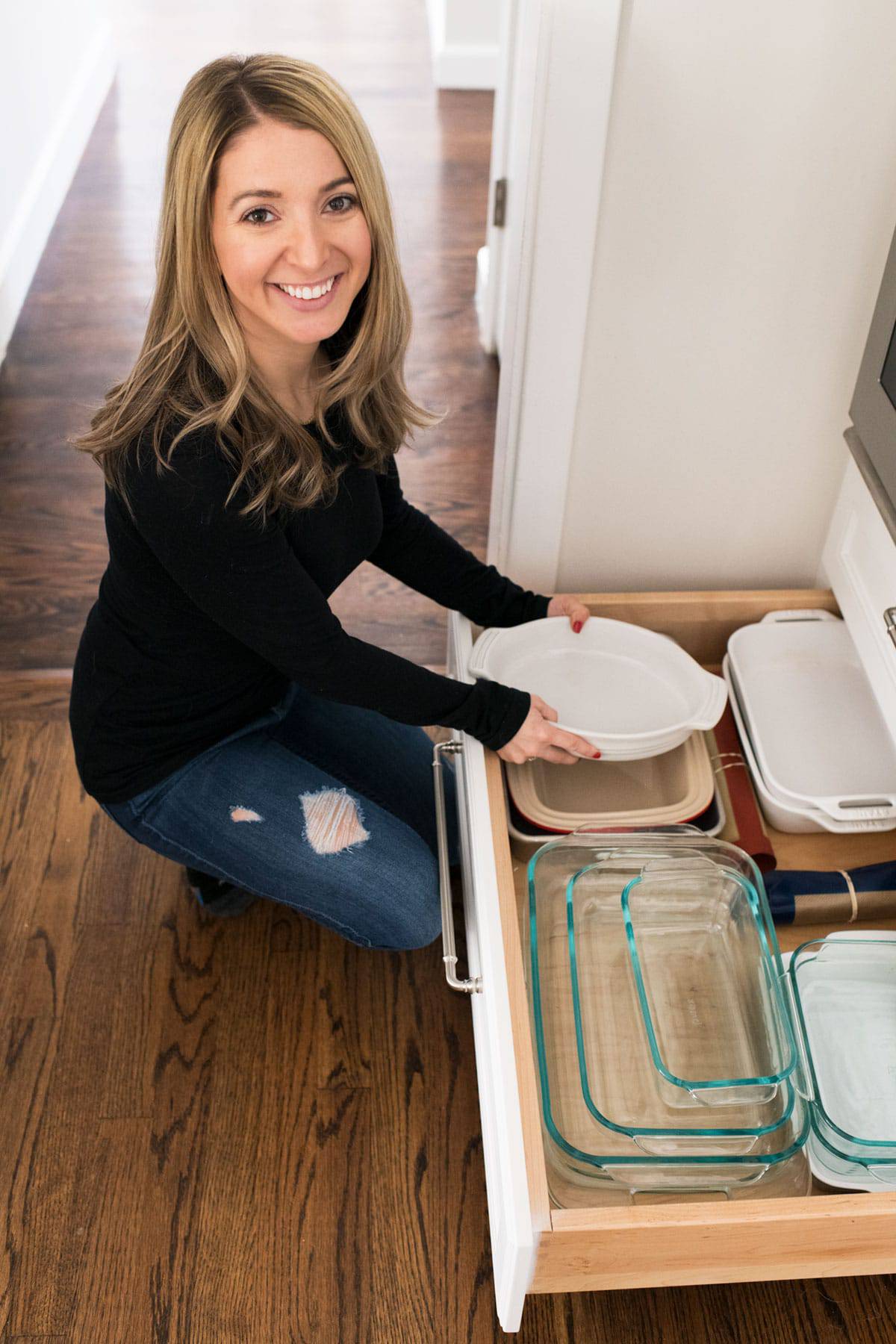
What to Look for in Safer Cookware
When I started looking for safer cookware, I learned that certain materials are far better for both your health and your cooking. I’ll get into my favorite specific products in a second, but first, let’s talk bigger picture. These materials are great non-toxic alternatives to the items I mentioned above.
Here’s what to look for:
- Stainless Steel: I’ve found that nickel-free stainless steel (look for the 18/0 label) is a great, non-reactive option that works perfectly for high-heat cooking. I love it for things like stir-fries and sautéing.
- Cast Iron: Cast iron is a classic for a reason! It’s versatile, and when properly seasoned, it’s naturally non-stick. It works great for everything from meats to veggies and even cornbread.
- Glass: Glass cookware is a great, safe option, as long as it’s lead-free. I use it when I’m roasting or baking.
- Enameled Cast Iron or Steel: These materials are fantastic for slow cooking and making soups, stews, and sauces. Just make sure it’s not marketed as “non-stick” because those may contain PFAs.
Thanks again to my friends at Branch Basics for helping me get a handle on these rules of thumb!
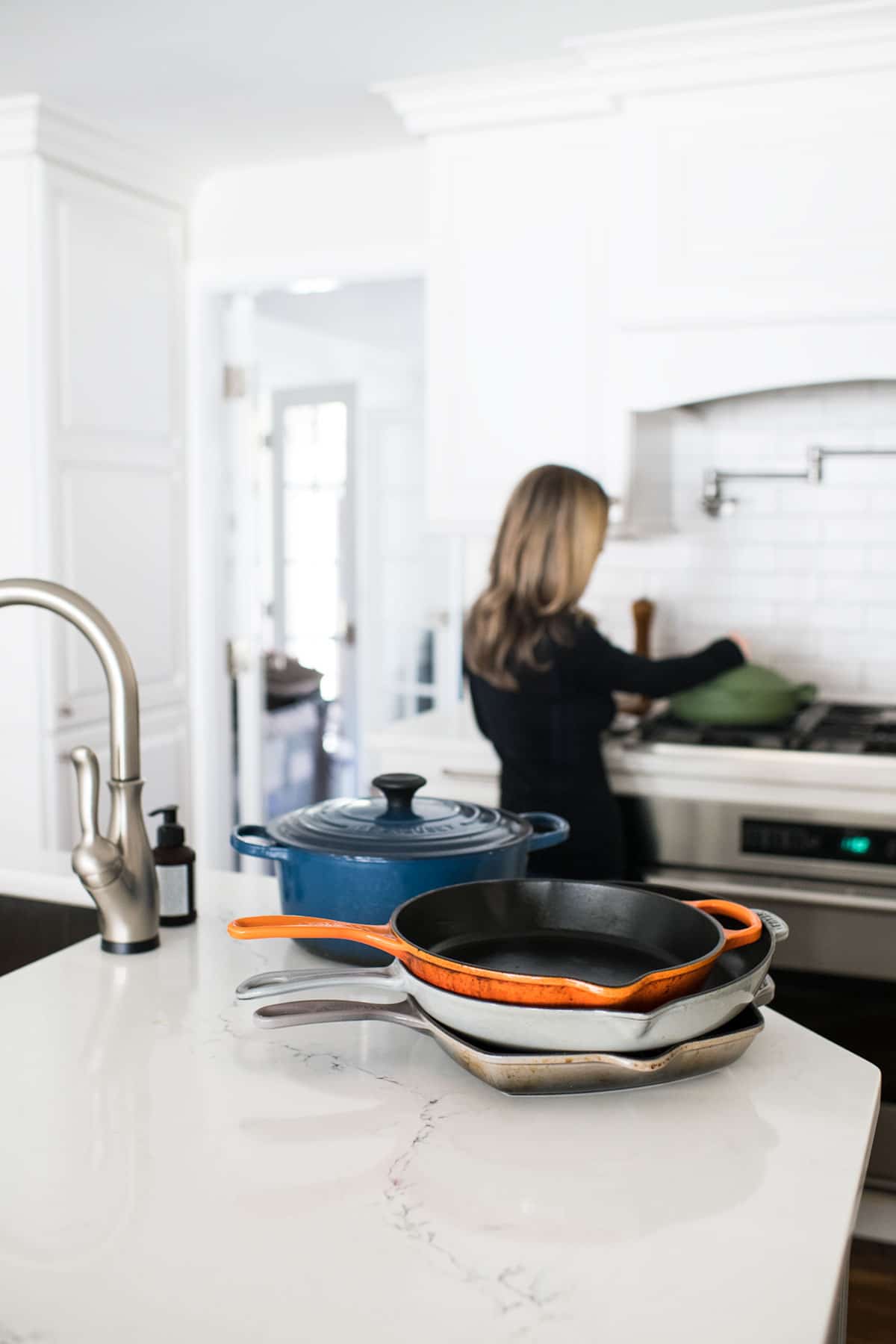
Our Safest Cookware Recommendations
Switching to non-toxic cookware is about variety. I’ve learned that having a mix of cookware for different types of cooking makes life so much easier—and safer! Having done the legwork to figure out the best assortment of safe cookware to have around the house, I’m ready to share my favorites with you! These brands are my go-to for safe, non-toxic cooking. I’ve tested each of them and can confidently say they’re the best. Here’s what I use:
For High-Heat Cooking:
- All-Clad (Stainless Steel): If you want something that’s built to last, I highly recommend All-Clad stainless steel. It’s an investment, but worth it. I love their skillets for searing meats or sautéing vegetables. These are an investment but you can for sure buy cheaper stainless ones.
- Le Creuset & Staub (Enameled Cast Iron): These brands have beautiful, durable options that I use for roasting, braising, and slow cooking. Just be sure that any color you pick has been third-party tested for lead and cadmium. I use these daily. They will last forever!!
- Lodge Cast Iron: When I’m craving a good steak or cornbread, Lodge cast iron is my go-to. It’s classic, affordable, and works great with high heat. I recommend one good cast iron skillet in your collection.
For Lower-Heat Cooking AKA non-stick:
Generally speaking, I do not use ceramic cookware when cooking with higher heat. Think searing steak or salmon, making a stir-fry, etc. I use these everyday for things like pancakes, eggs, etc.
- Caraway (Ceramic-Coated Aluminum): I absolutely love Caraway pans for everyday tasks like making eggs or pancakes. They’re non-toxic, look beautiful, and are a joy to cook with. But they’re not for high-heat cooking, and you will have to replace. These are the only oven-safe option, FYI.
- Our Place (Always Pan): Pretty and it’s great for low-heat cooking, like making stir-fries or sautéing veggies. Plus, it comes with a handy steamer insert! It only comes in one size and you will have to replace it.
- Greenpan (Ceramic-Coated): Greenpan is a budget-friendly choice that uses a natural ceramic coating. It’s perfect for medium-heat cooking, but it can wear out faster than other options.
Non-Stick Conclusion:
As someone who has had the Caraway, GreenPan, and the Always Pan for years, I do feel like Caraway and the Always are elevated GreenPans, yet you still have to replace them.
Here’s how I feel about it: if I can use these non-stick options on a daily basis to safely make eggs or pancakes, for example, at ease, I’m happy to invest in replacements every year or so . I think that having a non-toxic option is worth it!
You can’t go wrong with any of them, but know you will have to replace all of these, so maybe go cheaper?
How to Care for Non-Toxic Cookware
Taking care of your cookware is essential to making it last. Here are some tips that I’ve learned through trial and error:
For Ceramic Cookware:
If you’ve never cooked with ceramic cookware, it may be helpful to have a few rules of thumb so you’re ready to go when you start adding non-toxic pots and pans to your collection.
Before we give you our recommendations, our first piece of advice is to read the instructions included with your cookware. The manufacturers will usually have the best advice for how to specifically take care of each type of cookware.
While these non-toxic cookware alternatives will probably never outlast your old school options (just being honest here!), you can extend their shelf life by taking good care of them. That’s where maintenance comes in.
- Always use silicone or wooden utensils to avoid scratching the surface.
- Hand wash ceramic cookware—dishwashers can damage the coating.
- Give your ceramic pan a good wash before using it.
- Don’t use cooking oil sprays on ceramic.
- Don’t use ceramic to cook food at high temperatures! (This is why all of the ceramic brands are in my “lower-heat cooking” category above.) Use low to medium heat when working with ceramic.
- Never leave a ceramic pan empty on the burner.
For Cast Iron:
- Season your cast iron regularly to keep it in top shape.
- After the first seasoning, I re-season it twice a year to keep it rust-free and non-stick.
- To season: You’ll want to season your cast-iron pan for best use for years to come: Wash your skillet well in hot soapy water and dry completely. Brush a thin layer of melted oil inside your skillet. Place upside down on a middle oven rack at 375°, and place a baking sheet or foil on a lower rack to catch any oil drips! Bake 1 hour; let cool in the oven.
General Care Tips:
- Avoid using harsh chemicals. Or abrasive sponges when cleaning cookware.
- Throw away damaged pots and pans. Cookware that is chipped or damaged can more easily leach chemicals into your food.
- Avoid metal utensils when cooking. In the interest of minimizing chips and scratches to the cookware you already have, avoid using metal utensils when working with them. It’s also best to store this cookware carefully so that it doesn’t get extra scratches.
- Heat to lower temperatures. Heating cookware to 450* F and above can cause coatings to break down so that those toxic materials can find their way into the food you make.
- Use your exhaust fan. Turning that exhaust fan on while cooking with products made with toxic non-stick coatings will help ensure that the air circulates properly out of your home.
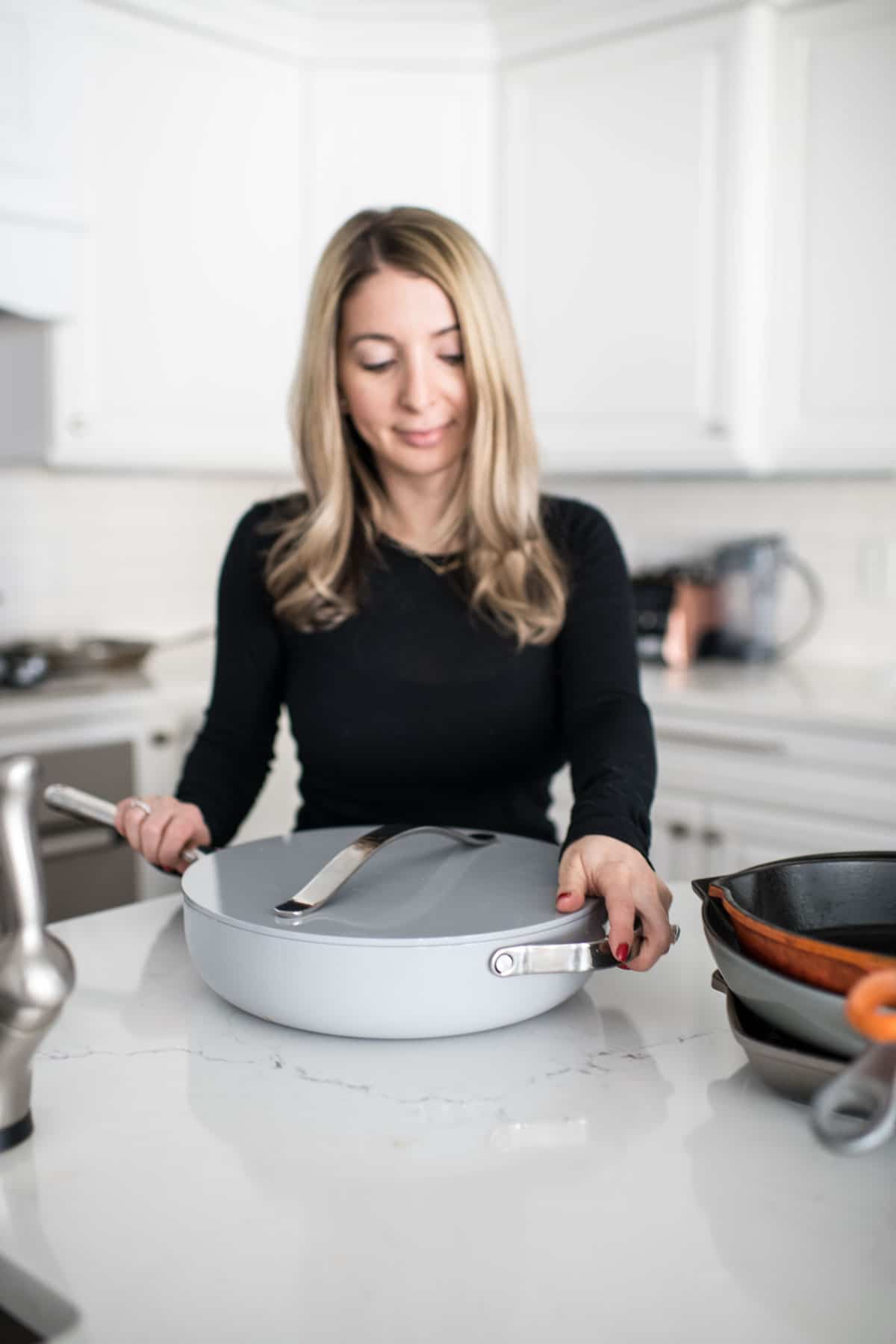
Conclusion: Build Your Ideal Cookware Set
Building your own collection of non-toxic cookware might take time, but I promise it’s worth it. Start with essentials like a Dutch oven, cast iron skillet, stainless steel pans, and a few non-stick options for low-heat cooking. Over time, you’ll create a kitchen full of safe cookware that ensures your meals are healthier and your cooking experience is more enjoyable.
Remember, it’s not about perfection. It’s about making safer, healthier choices when you can. And just like with food, a cleaner lifestyle doesn’t mean being perfect—it’s about balance.
- Dutch oven from Staub or Le Creuset
- A braiser
- Two or three stainless pans in different sizes: I like this and this.
- Stainless pots: In my opinion you can never go wrong investing in all-clad, but here is a great cheaper version, too!
- This skillet you will use for everything!
- One or two of the non-stick options! Note: You will have to replace these.
Shop:
Like the many other clean, safe alternatives I share in this space, safer cookware offers you one more opportunity to find areas of your life where you can make more balanced choices for your family. Over time, you can collect an assortment of safer cookware that will ensure that the food you prepare is that much more nourishing for you and the people you love.
Pin For Later:








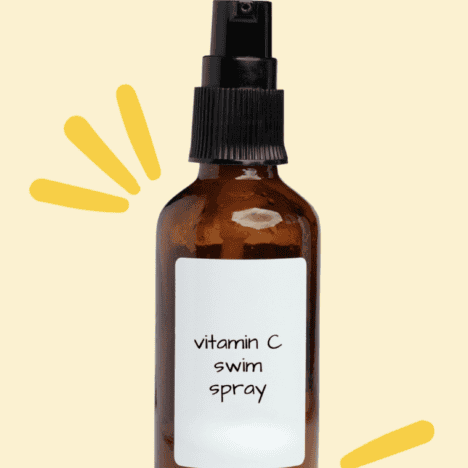
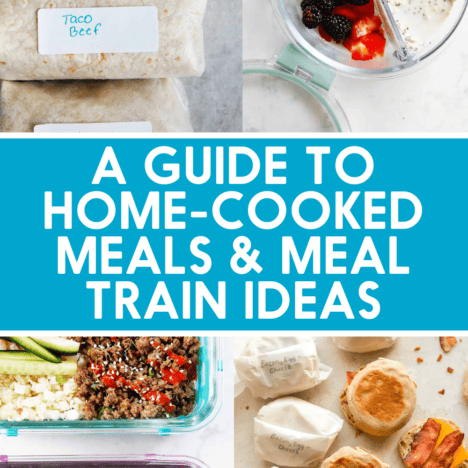

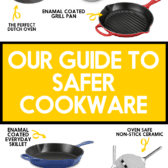
Wood utensils are the best option when using enameled cast iron or other ceramic cooking vessels. They don’t scratch the coating and won’t melt or get soft if the pan gets a little too hot.
Silicone (like spatulas and scrapers) utensils are best left for cool, cleanup work and not on the cooktop.
I’m not sure why won’t would not cook eggs on cast iron. I have made eggs every morning (and some evenings when wifey is tired) almost every day for decades. If you use butter or a little olive oil in a well seasoned pan they won’t stick at all.
The only things we don’t use cast iron for are acidic meals (tomato based dishes), some baking (pies, casseroles, etc. – those are done in glass), soups and stews (usually done in enameled cast iron or stainless steel). Cookie sheets are usually stainless steel. All-clad made some excellent half and full sheet tri-ply baking sheets in the USA about 10-20 years ago. We use those all the time for cookies. Lodge has a 1/4 sheet size baking pan that works good for that as well. Mac and cheese, Balanching veggies and some stir fry is done in all-clad stainless pots and pans. The good tri-ply stuff made in the USA, not the cheaper stuff of questionable materials made in China.
In our house 75-90% of all meals are prepared on cast iron.
I too came here looking for an electric frying pan as a prior Leslie commented in 2021, as well as a slow cooker but do not see either one. Would love to see recommendations on these.
Great recommendations! Stainless steel cookware is quite safe and has better heat conduction. But those steel pots and pans are not as attractive as ceramic. So I personally use GreenLife cookware as it is safer and environmentally friendly.
Hello. Great detailed reviews. What non toxic pans would you recommend for cooking up ground beef hamburger for a casserole or tacos? I saw you said you like the always pans however there are different styles of those. Which one would be good to cook eggs, and also would the always pan be good to cook hamburger in? Thanks
I have purchased many of your recommended pans, thank you! I came on today looking for an electric frying pan you might recommend. I don’t see one here, do you have any safe choices or one that you use? Thank you!
Thanks for this info! Can you clarify what you mean that the con for the Caraway is that it can’t be used to cook really any meat? Like even browning ground meat? Thanks!
Thanks for all this info! I just received my Caraway pots/pans and I am excited to start using them! I had a few questions that I was hoping you could help answer:
1) Caraway notes that you should only use the pots/pans on low to medium heat. Can I still use the pot to boil water, or is this not suggested? Just confused as they can be in the oven up to 550F. If not, is there another safe type of pot I should add to my collection for boiling water?
2) You mention above not using virgin olive oil on the pans, is there a reason for that? What type of oil should I be using as I do cook with EVOO a lot!
3) Caraway and you both note not to use metal utensils on the cookware. You suggested silicone… is that a safe alternative to use?
Thanks for all the info and appreciate your input!
Hi!
1. Have you reached out to them to ask that? I have boiled water in mine, but it’s a good question for them.
2. Updated to note, just avoid cooking sprays specifically.
3. Yes, silicone is the safe alternative.
🙂
I’d love to replace my pots and pans with safer options. We use a non-stick (I know, I know) skillet right now to cook alot of stuff, especially eggs. What would you recommend for cooking eggs?